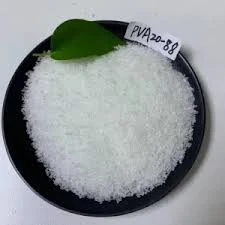The Role of Hydroxypropyl Methylcellulose (HPMC) in Construction Chemicals
Hydroxypropyl Methylcellulose (HPMC) is a versatile compound widely utilized in the construction industry, particularly in the formulation of construction chemicals. This cellulose derivative is obtained from cellulose through etherification, resulting in a product that possesses unique properties beneficial to construction applications.
The Role of Hydroxypropyl Methylcellulose (HPMC) in Construction Chemicals
In addition to its thickening properties, HPMC provides improved water retention in cement-based formulations. This characteristic is particularly important for construction materials, as it helps to maintain moisture levels during the curing process. Adequate moisture retention is essential to ensure proper hydration of the cement, thereby enhancing its strength and durability. This quality of HPMC ultimately contributes to the longevity and performance of construction materials, making it an essential ingredient in various applications.
construction chemical hpmc

Moreover, HPMC enhances the workability and open time of construction materials. Open time refers to the period during which the adhesive remains workable after application. HPMC extends this time frame, allowing contractors ample opportunity to position tiles or other materials without the pressure of immediate adhesion. This feature is particularly beneficial in larger projects where precision is crucial.
Another significant advantage of HPMC is its ability to impart anti-slip characteristics to construction materials. This is vital in applications like floor tiling, where safety and stability are paramount. By improving the grip between surfaces, HPMC contributes to safer construction outcomes, reducing the risk of accidents caused by slippery surfaces.
HPMC is also praised for its compatibility with various other components commonly used in construction chemicals. It can be easily integrated into formulations containing cements, hydraulic binders, and other additives, thereby enhancing the overall performance of the finished product. This compatibility allows manufacturers to create specialized solutions tailored to specific construction applications, paving the way for innovative developments in the industry.
In conclusion, Hydroxypropyl Methylcellulose plays a crucial role in the formulation of construction chemicals, providing multiple benefits including enhanced viscosity, improved water retention, extended open time, and anti-slip properties. Its adaptability to various formulations makes it an indispensable ingredient in modern construction materials. As the construction industry continues to evolve, the importance of HPMC and similar compounds will undoubtedly grow, contributing to more efficient and durable building practices.
-
The Application and Significance of Construction RdpNewsMay.19,2025
-
Industrial Grade HpmcNewsMay.19,2025
-
Building Coating Adhesive Building Coating Adhesive HpmcNewsMay.19,2025
-
Application Of Hpmc For Detergent For Detergent In DetergentsNewsMay.19,2025
-
Application Of Hpmc Cellulose In Cement-Based MaterialsNewsMay.19,2025
-
Application Of High Quality Hpmc For Construction In The Field Of ConstructionNewsMay.19,2025




